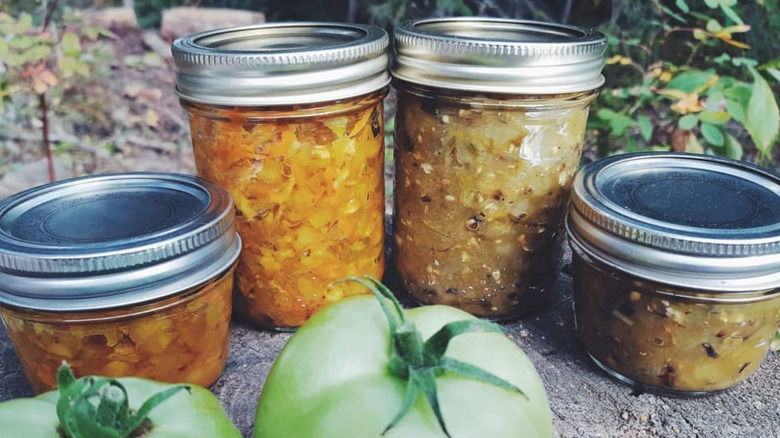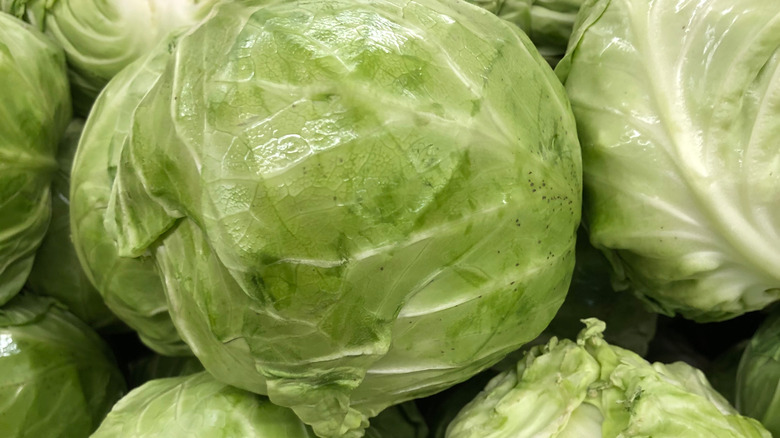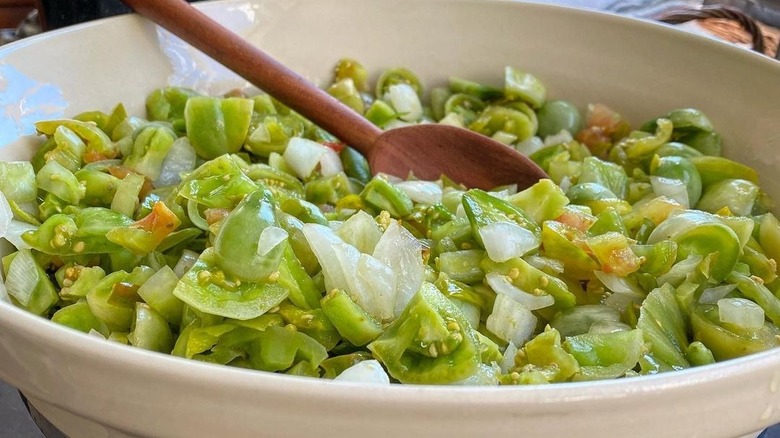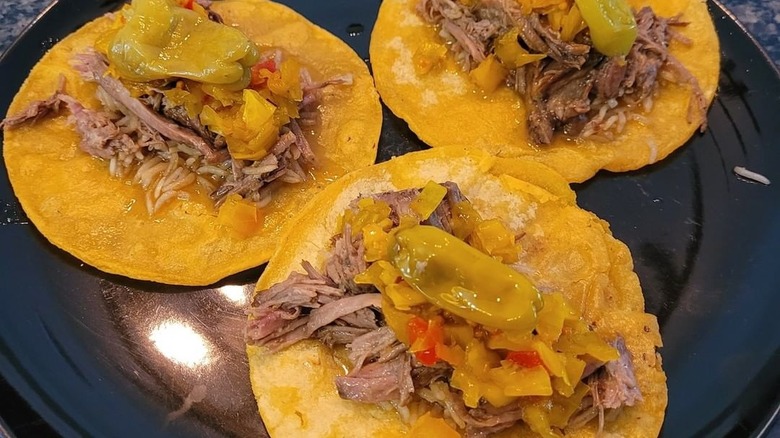Chow-Chow: The South's Beloved Bumper Crop Relish
During the warm summer months in the South, the sun turns to night without much of a dip in the thermometer's reading. The region's warm, fertile soil is indeed ripe for the picking. So, any self-respecting Southerner, at the very least, has a small kitchen garden planted in the summer. And, for those die-hards? The garden can get out of control with every variety of bean, squash, greens, corn, pepper, tomato, and melons under the sun demanding their attention. If it's a bumper crop kind of year, the canning supplies are a must.
If you were born into such good fortune, you know the simple pleasures a dinner of freshly picked vegetables and piping hot cornbread brought. Undoubtedly, the dinner table was set with a jar of chow-chow and spoon on the ready-to-dress any summer fare your heart desired. Chow-chow, though, served its purpose throughout the year – canned by the dozens as the Southern condiment of choice.
Outside of the South, the Pennsylvanian Dutch make Northern chow-chow that could stand up to any Giardiniera. Although, if you think chow-chow is just relish, bite your tongue at even the mere thought of such. Chow-chow is one of those recipes that once you know, others pale in comparison. Still, as it turns out, chow-chow's roots can be traced much further than the South.
Chow-chow's lineage
Folks have their opinions on how and where the tangy, yet sweet chow-chow originated. But, to clarify, the dog breed isn't part of those opinions.
Its actual name likely comes from the French word "chou" which means cabbage –- a major component of some chow-chow recipes. So, one explanation for its lineage is that when the Acadian people migrated from Nova Scotia to Louisiana during the early 1800s, they brought with them their French culinary ways. This morphed into Cajun cuisine, including what is now known as chow-chow.
Others claim that chow-chow was brought to America in the early part of the 20th century by Chinese railroad workers, as once cited by Southern food historian John Egerton. The book "The Food Lover's Companion" concurs, stating, "Originally, the term was used to describe a Chinese condiment of orange peel and ginger in a heavy syrup." There's also a proposed connection to piccalilli – an old English interpretation of South Asian pickles. This may be why some call chow-chow "Indian Pickle."
But, in true Southern fashion, maybe it's a combination of all of these theories. Somewhat like macaroni and cheese — a soul food staple that can be traced to several countries of origin — so goes the story of chow-chow.
Ingredients and how it's made
Just as opinions vary on where chow-chow comes from, so does its list of ingredients. Some are spicy while others are sweet. Yet, all of them have an acidic base of most often vinegar. Truly, from tomato-heavy to predominately cabbage-based, chow-chow's accent is dependent upon its maker's dialect.
Chef Karl Worley of Nashville's Biscuit Love told Liveability that growing up in east Tennessee, he has clear recollections of how chow-chow was made. "My grandparents made it near the first frost with whatever would have been killed (green tomatoes) and vegetables that were growing abundantly," he said. "I remember cabbage and green tomato always being in it." Food Network personality Kardea Brown's recipe also features green tomatoes along with bell peppers and spices such as whole cloves and turmeric. Whereas, at the North Carolina-based Tupelo Honey Cafe, chef Brian Sonoskus makes a cherry apple chow-chow with dried cherries, dried apples, red cabbage, onion, mustard, and orange marmalade.
The store-bought kind will do in a tight pinch. But wouldn't that defeat the purpose of using up all that bumper crop? The traditional technique for making chow-chow; however, is pretty simple no matter the ingredients. The produce is first salted to draw out excess moisture before being brined in vinegar, sugar, and various seasonings such as mustard seeds and red pepper flakes. Finally, the chow-chow is either refrigerated or canned for later use.
Chow-Chow Pairings
Think of chow-chow as the little black dress of Southern condiments. Karl Worley echoes pretty much any Southerner's choice pairings. "We ate it on beans, hot dogs, beans and more beans," he said. Chow-chow shows up in other Southern favorites like deviled eggs, or country ham and biscuits. But you shouldn't stop with the usual suspects.
Because something pickled elevates a dish's flavor, Durham chef Drew Brown of Farmhand Foods told the Charlotte Observer, "It's why Asian food or Latin food tastes so interesting." So, just as pickled jalapeños and other peppers add interest to tacos and pho, perhaps chow-chow could shine in such international cuisines.
It can be used to make salad dressings such as Thousand Island, for instance, which is a classic spread for Reuben sandwiches. And a Big Mac? It's just not the same without Thousand Island dressing. So, next time you're grilling out, bring on the chow-chow for those burgers!
When it comes to playing around with new recipes and pairings, chow-chow should top your list to try. But if you're for whatever reason still hesitant, consider what the late John Egerton once wrote to John T. Edge of The Bitter Southerner: "...this trial-and-error path is the way to culinary excellence, so give yourself to the cause, and may the Sauce be with you. Chow! John Egerton."



